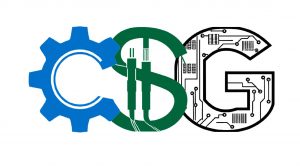Our services
As part of the development service provider portfolio, our engineers support you as an extended workbench throughout your entire development process. From the first concept idea to the coordinated circuit diagram, from the desired customer experience to software feature integration, we can flexibly integrate the individual phases and modules of our design, implementation, verification and validation process into your process landscape. You benefit from additional competence and manpower without having to adapt your well-established processes in the company.
In addition, we offer outstanding quality and unique service in the area of our core competencies – E/E engineering, RAM/LCC disciplines, model-based system engineering, especially the functional analysis of subsystems and the design of fuel supply systems. You can find more information about these competencies here.
Below you will find details and specialist information about our service portfolio as a development service provider to give you an impression of our expertise. If you are interested, please don’t hesitate to contact us for your individual offer.
Requirements analysis and system architecture development
Requirement analysis and system architecture development are crucial steps in the engineering process, particularly in the automotive, railway, and aerospace industries. These disciplines involve the meticulous examination of system requirements, the identification of functional and non-functional aspects, and the creation of a well-defined system architecture to ensure optimal performance, reliability, and safety. By adopting a systematic approach and leveraging modern engineering methodologies, our engineers design, develop, and integrate complex systems while meeting the specific demands of your product.
- Uncovering system needs by analysing functional, safety, legal, production, and operational requirements
- Development of an integrated and efficient system architecture design
- System design aligns with compliance & legal standards, safety regulations and environmental guidelines
- Optimal resource allocation for high performance, reliability, and cost-effectiveness
- Comprehensive system simulation regarding functionality, usability, security, and performance assurance
Requirement analysis serves as the initial step in system design, providing engineers with valuable insights into the system’s needs and objectives. This process involves the identification and analysis of various types of requirements, including functional requirements, which define what the system should do, and non-functional requirements, which specify constraints and quality attributes. This considers, legal requirements, production limitations, and operational constraints to ensure compliance and feasibility.
By conducting a thorough requirement analysis, our engineers gain a holistic understanding of the system’s behaviour and its interactions with electronics, electrics, and software components. Safety requirements are identified to address potential hazards and mitigate risks. Performance constraints are defined to ensure optimal system operation within specified limits. Regulatory standards are considered to meet legal and compliance obligations.
Through the utilization of model-based system engineering (MBSE) techniques, such as creating models and conducting simulations, our engineers can delve deep into system requirements, identify potential improvements, and develop innovative solutions. This enables the visualization and analysis of the system’s functional and non-functional aspects, facilitating effective requirement management and ensuring that all system needs are adequately addressed.
Once the requirements are comprehensively analysed, the next crucial development step is the system architecture development itself. This process involves defining the structure, interfaces, and interactions of the E/E system. System architecture considers the complex interdependencies between electronics, electrics, and software application behaviour while respecting the constraints for its mechanical integration to ensure seamless integration and optimal performance.
Functional analysis is a technique used during system architecture development to gain a better understanding of the functions and behaviours of the system components. It involves a stepwise decomposition of the system into smaller functional elements, identifying their relationships and dependencies, and defining the flow of information and control between them. By employing functional analysis, our engineers gain insights into how the system functions, enabling them to design an architecture that effectively supports the desired system behaviour.
In addition, we utilize MBSE techniques to create model-based representations of the system architecture, enabling visualization, analysis, and validation of the system’s behaviour. This approach facilitates the identification of potential bottlenecks, verification of compliance with requirements, and exploration of alternative design options. With functional analysis as a cornerstone, we develop system architectures that optimize integration, efficiency, and performance.
One of the key advantages of employing MBSE techniques in requirement analysis and system architecture development is the ability for an early identification of reusable system elements. Through thorough analysis and simulation, our engineers identify components or subsystems that exhibit a high degree of modularity and reusability. These reusable elements can be leveraged in future system designs or projects, saving time and costs in the long term. Systematically cataloguing and managing these reusable components accelerates development cycles, enhances efficiency, and gains a competitive edge.
Streamlining the project engineering process is a direct outcome of effective requirement analysis and system architecture development. By utilizing MBSE techniques to understand and simulate the system’s behaviour, we identify areas where optimization and streamlining can be achieved. This includes identifying redundancies, eliminating unnecessary complexity, and improving overall engineering efficiency. The insights gained from requirement analysis and system architecture development inform project engineers about where to focus their efforts and streamline processes for better outcomes.
Design, Development & Testing
Considering all engineering aspects during system development – mechanics, electrics, electronics, and software development – we specialize in delivering cutting-edge solutions for the automotive, railway, and aerospace industries. With a highlighted focus on electronics and software, our work encompasses a wide range of activities that ensure the seamless integration and optimal functioning of complex and distributed systems. By leveraging model-based system engineering principles, we excel at managing the interface between electrics and electronics, facilitating specification conform software application interaction, the mechanical integration of the system and enabling efficient collaboration among various disciplines.
- Seamless integration of complex, distributed systems
- Agile software development for digital transformation
- AUTOSAR compliance and functional safety assurance
- Reliable software architectures for real-time execution
- Comprehensive software testing (functional, usability, security, performance)
Our engineers take a multifaceted approach to address the intricate requirements of the automotive, railway, and aerospace industries. Within the realm of electrics and electronics (E/E) engineering, our expertise lies in efficient interface management, ensuring a harmonious interaction between electrical and electronic components. This involves meticulous coordination of wiring, connectors, and control units including their embedded subsystems and software application to establish reliable connections and optimize signal flow.
In the domain of software development, we embrace agile methodologies and leverage digital transformation to deliver robust solutions. The software architectures we develop meet the demanding needs of modern industries. From frontend to backend application development, we strive to create intuitive user interfaces and efficient backend systems, carefully considering factors such as usability, scalability, and maintainability. Throughout the development process, we employ rigorous software testing techniques to identify and rectify any potential defects, ensuring high-quality deliverables.
Regarding embedded software development, we are well-versed in the AUTOSAR (AUTomotive Open System ARchitecture) standard, enabling us to develop software that adheres to industry best practices for distributed systems. Moreover, we are committed to ensuring functional safety in accordance with the ISO 26262 standard. By implementing reliable software architectures, employing fault-tolerant design strategies, and conducting thorough testing, we help mitigate risks and enhance the safety and reliability of embedded systems. Real-time execution is a key consideration in our work, ensuring that critical operations are performed with minimal delay.
Comprehensive software testing encompasses various dimensions. Functional testing validates the intended behaviour of software components, ensuring they meet the specified requirements. Usability testing focuses on evaluating the user experience and interface design, guaranteeing an intuitive and user-friendly software environment. Security testing is crucial to safeguard against potential vulnerabilities and threats, protecting sensitive data and ensuring the system’s integrity. Finally, performance testing evaluates the software’s efficiency, scalability, and response time under different workload conditions.
Our engineers excel in E/E engineering, software development, embedded software development, and software testing. Our core strengths lie in electrics and electronics interface management, software application interaction, seamless integration of complex and distributed systems, model-based system engineering, agile software development, digital transformation, AUTOSAR compliance, functional safety, real-time execution, and comprehensive software testing.
Product introduction, root cause analysis and maintenance
Our company provides comprehensive product introduction and system integration services tailored to the specific needs of the automotive, railway, and aerospace industries. With our technical expertise in RAM/LCC services and experience, we ensure a smooth transition from the development phase to the operational environment, maximizing the performance and reliability of your systems.
Our team of skilled engineers excels in integrating complex systems into larger process frameworks, be it a fleet of trains or integrated E/E systems within a broader operational context. We understand the unique challenges faced by the automotive, railway, and aerospace sectors, including stringent safety requirements, regulatory compliance, and the need for seamless interoperability.
During the product introduction phase, we work closely with your team to develop a comprehensive integration strategy. We conduct thorough system analysis, evaluating the compatibility of various subsystems and identifying potential risks or bottlenecks. Our engineers leverage their expertise in system architecture and software integration to ensure optimal performance and efficient deployment.
As part of our system integration services, we offer end-to-end testing and validation to verify the functionality and reliability of the integrated systems. We utilize advanced simulation tools and perform testing scenarios, including stress testing, fault injection, and performance evaluation. By identifying and resolving issues early on, we minimize the risk of costly delays and ensure a successful product launch.
Once the system is integrated into the operational environment, our engineers provide ongoing support to monitor its performance and address any potential issues. We employ advanced diagnostic techniques and perform root cause analysis to identify the underlying causes of problems and implement effective corrective measures. Our proactive approach helps prevent failures, optimize system performance, and extend the product’s lifecycle.
- Seamless integration of complex systems into operational environments
- Compliance with industry safety standards and regulations
- Expertise in system architecture and software integration
- Testing and validation for reliable and efficient deployment
- Proactive monitoring, root cause analysis, and support for optimized performance and extended lifecycle
Successful system integration requires a well-defined strategy. At CSG, we work closely with our clients to develop a comprehensive integration plan that addresses their specific needs. Our engineers conduct a thorough system analysis, evaluating the compatibility of various subsystems and identifying potential risks or bottlenecks. By understanding the intricacies of the systems involved, we can design an integration approach that minimizes disruptions and maximizes efficiency.
Our team of engineers brings extensive experience in RAM/LCC, deep knowledge of system architecture and software integration techniques, enabling us to tackle the most complex integration challenges. We utilize industry best practices and employ cutting-edge tools to ensure optimal performance and seamless interoperability. With our expertise, we can integrate large-scale systems, such as fleets of trains, or smaller, more intricate systems, into a larger operational context with precision and efficiency.
To ensure the reliability and functionality of integrated systems, comprehensive testing and validation are paramount. We employ advanced simulation tools and perform rigorous testing scenarios. This includes stress testing, fault injection, and performance evaluation to identify any weaknesses or potential issues. By uncovering and addressing these concerns early on, we minimize the risk of costly delays and guarantee a successful product launch.
Once the system is integrated into the operational environment, our job is far from over. We provide ongoing support to monitor its performance and identify any potential issues. Our team utilizes advanced diagnostic techniques to perform failure reporting, root cause analysis and implementing corective actions (FRACAS) ensuring a deep understanding of the underlying causes of problems. We follow a full life cycle cost approach with a strong focus on the systems longest lifetime period – it’s operation. By adopting a proactive approach, we can address issues swiftly, optimize system performance, and enhance the overall reliability and availability of the product.
At CSG, we understand that supporting the operational lifecycle of a product is as crucial as the initial integration. While we do not perform actual maintenance activities, we assist in maintenance planning and preparation, offering expert insights and guidance. Our ongoing support services help optimize system performance, extend the product’s lifecycle, and ensure our clients can deliver reliable and efficient solutions to their end customers.
Our product introduction and system integration services provide a comprehensive solution to the challenges faced by the automotive, railway, and aerospace industries. By leveraging our technical expertise, deep industry knowledge, and commitment to excellence, we enable our clients to achieve a seamless integration of their systems into operational environments. With our rigorous testing, proactive monitoring, and ongoing support, we ensure optimized performance, enhanced reliability, and an extended product lifecycle.
Continuous product improvement & update lifecycle
In the automotive, railway, and aerospace industries, modern products undergo constant updates and improvements to meet changing market demands and customer expectations. Our team of skilled engineers is well-versed in the techniques and strategies required to navigate this dynamic landscape.
We know that the journey of a product doesn’t end with successful integration. In fact, it’s just the beginning of a continuous product improvement and update lifecycle. We offer a range of services tailored to help our clients thrive in this evolving landscape, where the focus shifts from one-time sales to a sustainable long-term customer engagement and satisfaction.
A major driving force of the product improvement and update lifecycle is the shift from selling a product to selling a service over its lifetime. For example, in the railway industry, instead of simply selling railcars, OEM’s are now interested in selling traveled kilometers and taking care of maintenance as well. We assist our clients in implementing business models that align with this shift, ensuring they can effectively monetize their products throughout their lifecycle.
Another essential aspect are software updates and feature enhancements. In industries like automotive and aerospace, over-the-air updates have become a critical method to deliver new features and improve functionality to customers. We specialize in developing secure and efficient over-the-air update mechanisms, enabling our clients to seamlessly deploy updates to their products. We also help them navigate the complexities of implementing updates with minimum data package sizes, ensuring efficient transmission over long distances with large failure tolerance.
During the product improvement and update lifecycle, we utilize various techniques such as agile development methodologies, continuous integration and delivery, and data-driven decision-making. These approaches allow us to quickly respond to market demands, efficiently implement updates, and make informed decisions based on real-time data and customer feedback.
- Business model transformation from one-time sales to long-term customer engagement
- Over-the-air updates for software applications in automotive, railway, and aerospace industries
- Transmission of updates over long distances with minimum data package sizes and large failure tolerances
- Agile development methodologies and continuous integration and delivery for rapid and efficient updates
- Data-driven decision-making based on real-time data and customer feedback
In today’s dynamic business landscape, successful integration of a product is just the beginning. A continuous product improvement and update lifecycle have become the norm in industries like automotive, railway, and aerospace. At CSG we offer a suite of services designed to assist our clients in thriving in this evolving market, where the focus shifts from one-time sales to long-term customer satisfaction and engagement.
A key aspect of the product improvement and update lifecycle is the transformation of business models from selling products to selling services over their lifetime. For instance, in the railway industry, customers are no longer interested in merely purchasing railcars; they seek to monetize their products by selling traveled kilometers and providing maintenance services. We support our clients navigate this transition, ensuring they can effectively capitalize on the changing market dynamics and provide enhanced value to their customers throughout the product’s lifecycle.
In industries like automotive and aerospace, software updates and feature enhancements play a vital role in meeting customer expectations and staying competitive. Over-the-air updates have emerged as a crucial method for delivering new features, bug fixes, and performance improvements. Our team specializes in developing secure and efficient over-the-air update mechanisms, allowing our clients to seamlessly deploy updates to their products. We ensure the updates are transmitted efficiently over long distances, with a focus on minimum data package sizes and large failure tolerance.
To keep pace with the demands of the continuous product improvement and update lifecycle, we employ agile development methodologies and adopt continuous integration and delivery practices. Agile methodologies enable us to quickly respond to changing market requirements and customer feedback, allowing for faster iteration and shorter release cycles. Continuous integration and delivery ensure that updates are efficiently integrated into the existing product, minimizing disruptions and enabling a seamless transition for end-users.
In the product improvement and update lifecycle, data plays a crucial role in making informed decisions. We utilize a data-driven approach, leveraging real-time data and customer feedback to guide our clients’ product improvement strategies. By analyzing data on product performance, customer usage patterns, and market trends, we help our clients identify areas for improvement, prioritize feature enhancements, and make data-backed decisions that drive customer satisfaction and market success.
The continuous product improvement and update lifecycle require a strategic and proactive approach. We offer comprehensive services tailored to help our clients thrive in this ever-evolving landscape. From embracing service-centric business models to enabling seamless over-the-air updates, leveraging agile development methodologies, and making data-driven decisions, we empower our clients to stay ahead of the competition and deliver exceptional products and services throughout their lifecycle.









